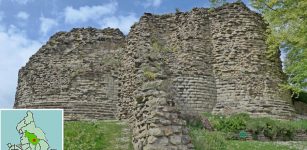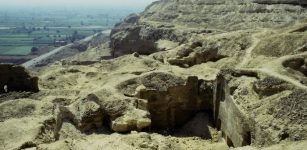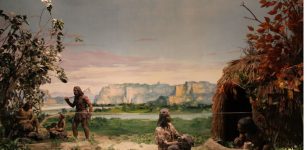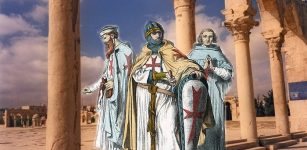Representation Of Ezekiel’s Wheel Among Objects Unearthed At Plantation Site In Maryland
MessageToEagle.com – Striking evidence of how African and Christian religious beliefs blended and merged in the 19th century has been uncovered at the site of plantation near Easton, Maryland, where abolitionist Frederick Douglass once lived.
A team of archeologists led by Mark P. Leone of the University of Maryland have unearthed an intact set of objects that they interpret as religious symbols—traditional ones from Africa, but mixed with what they believe to be a Biblical image: a representation of Ezekiel’s Wheel.
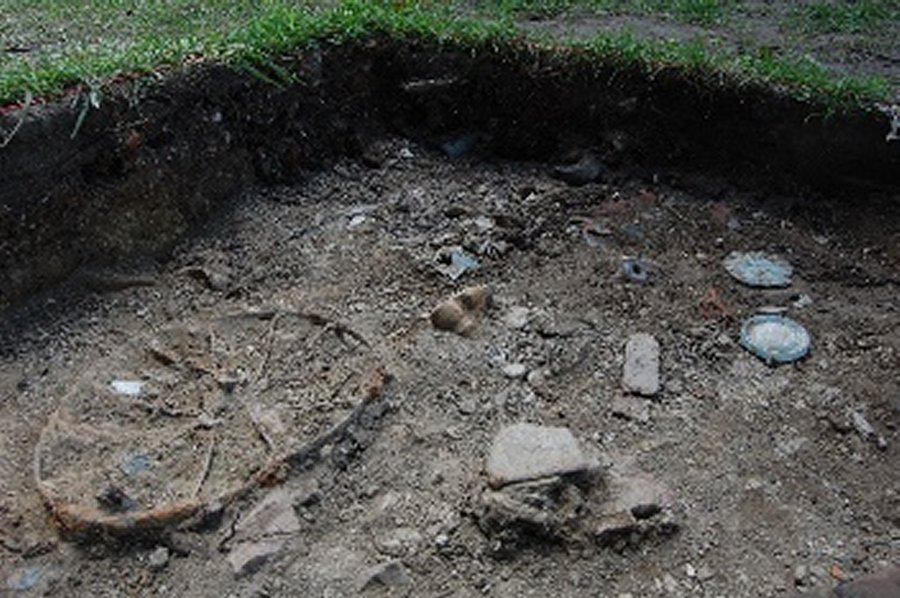
Frederick Douglass (1818-95) was a prominent American abolitionist, author and orator. Born a slave, Douglass escaped at age 20 and went on to become a world-renowned anti-slavery activist. Douglass spent two years there as a child and wrote extensively about his experiences and observations.
“No one has found this combination before. It may give us a snapshot of the blending of religious symbols of a tenant farmer after 1865,” says University of Maryland archaeologist Mark P. Leone, who led the team.
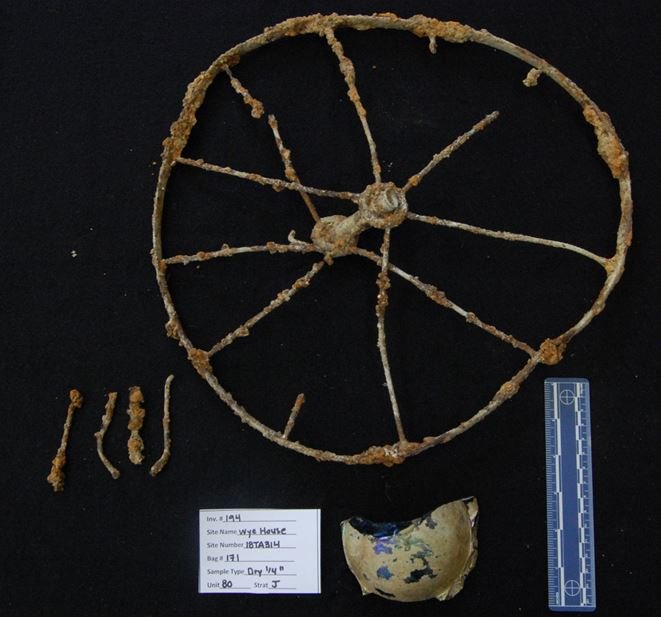
“Christianity had not erased traditional African spirit practices; it had merged with them to form a potent blend that still thrives today.”
The artifacts were found intact just below the surface where a tenant farmer’s home once stood and dated it to 1865-1880.
A powerful West Central African spiritual symbol from the BaKongo belief system – the cosmogram (or a circle with an X inside of it) – was also found in the house.

Uniquely, the discovered array contains both.
“We call this the ‘emergent wheel’ because it shows the growing power of Christian imagery alongside the African,” Leone says. “It shows us a moment in time when these symbols literally lived side-by-side.”
The deposit contains a cosmogram-like figure molded into the lid of a canning jar, surrounded by a series of circles, and a wheel—probably the remnant of a small cart or barrow. Leone says the wheel was unexpected and that he had never seen one in a setting like this.
Christian preachers are thought to have repurposed the cosmogram as Ezekiel’s blazing chariot wheel, described in the Old Testament as a wheel inside a wheel, in their efforts to convert enslaved people who originated from West Central Africa.
Carlene Phoenix, a descendent of the Wye House Plantation enslaved community, still lives and worships in the area. She says the wheel retains its Christian symbolism and power, even today.
Evidence and artifacts gathered by Leone’s team are on display in a new exhibition at the University of Maryland’s Hornbake Library.
MessageToEagle.com



